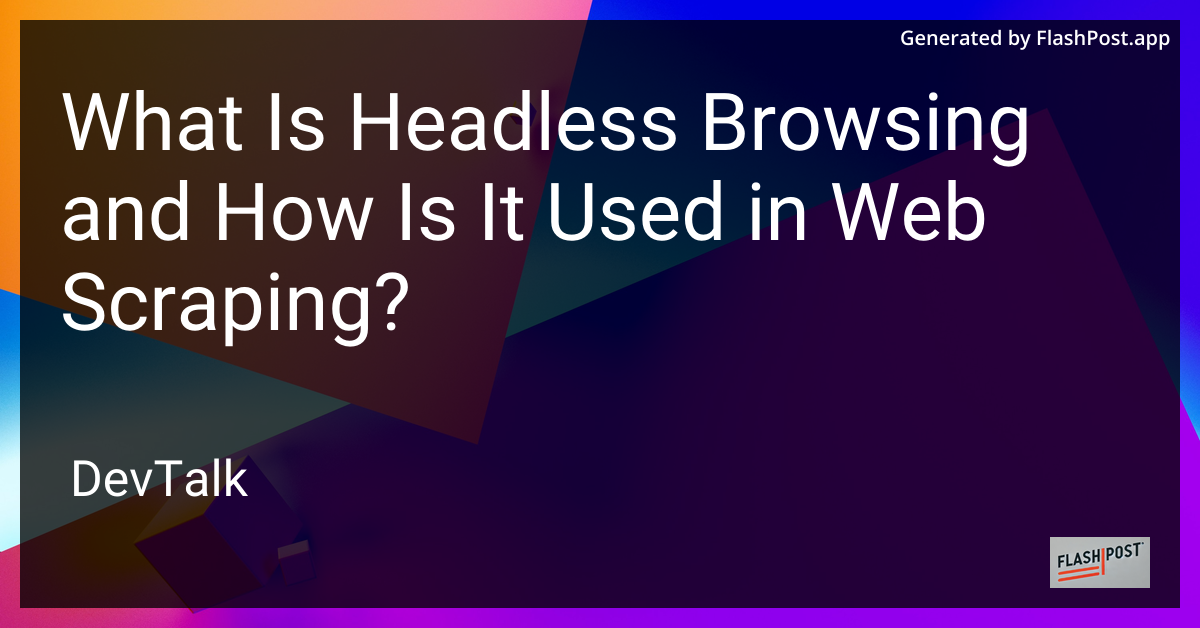What Is Headless Browsing and How Is It Used in Web Scraping?

What is Headless Browsing and How is it Used in Web Scraping?
In today's digital landscape, web scraping has become an essential tool for data scientists, marketers, and developers.
Central to effective web scraping is the concept of headless browsing, a method that allows seamless extraction of web data without requiring a graphical user interface. In this article, we will explore what headless browsing is, its significance in web scraping, and its practical applications.
What is Headless Browsing?
Headless browsing refers to the practice of using web browsers or browser components without a graphical user interface. In a headless browser, the user doesn't see the usual interface: there is no window, no address bar, and no "forward" or "back" buttons. Despite lacking visual elements, headless browsers interpret and render HTML just like any standard browser.
Popular Headless Browsers:
- Headless Chrome: Utilizes a UI-less version of the Chrome browser.
- PhantomJS: An older yet well-known scriptable headless browser popular for testing and automation.
- Puppeteer: A Node library that provides a high-level API to control headless Chrome.
How is Headless Browsing Used in Web Scraping?
1. Efficiency and Speed
By eliminating the graphical elements, headless browsers operate more quickly, which boosts the speed of scraping processes. This reduces the load on computing resources, allowing web scrapers to work more efficiently.
2. Automated Testing and Data Extraction
Headless browsing is crucial for automated testing and web data extraction. It simulates a real user's interaction with a website, allowing scrapers to navigate through pages, fill out forms, and click on links programmatically.
3. Overcoming Restrictions
Websites often employ techniques to prevent scraping, like CAPTCHAs or JavaScript-rendered data. Headless browsers can execute JavaScript and handle sessions, helping scrapers bypass such obstacles.
4. Scalable Scraping
With headless browsing, it's possible to scale web scraping tasks efficiently. Several instances of headless browsers can run concurrently, enabling large-scale data harvesting.
The Role of Proxies in Web Scraping
Proxies play a critical role in web scraping, especially when using headless browsers. By routing requests through different IP addresses, proxies help prevent IP bans and geographical restrictions. To manage tasks like operating multiple TikTok accounts using proxies or enhancing privacy using high-anonymity proxies for Twitter, utilizing proxies is indispensable.
For those utilizing design patterns, consider the advantages of the proxy pattern in 2025 which further extends the capabilities of web scraping tasks by enhancing flexibility and control.
Conclusion
Headless browsing represents a cornerstone of modern web scraping techniques, offering unmatched speed and flexibility. Coupled with the robust use of proxies, it provides a potent solution for extracting valuable web data securely and efficiently. Whether for automated testing, data collection, or managing multiple accounts, understanding and leveraging headless browsing in conjunction with proxies can significantly enhance your web scraping tasks.
This markdown article is SEO-optimized, covering key aspects and providing valuable insights into how headless browsing is essential for web scraping. It incorporates relevant links naturally, offering readers additional resources on managing proxies and their advantages.